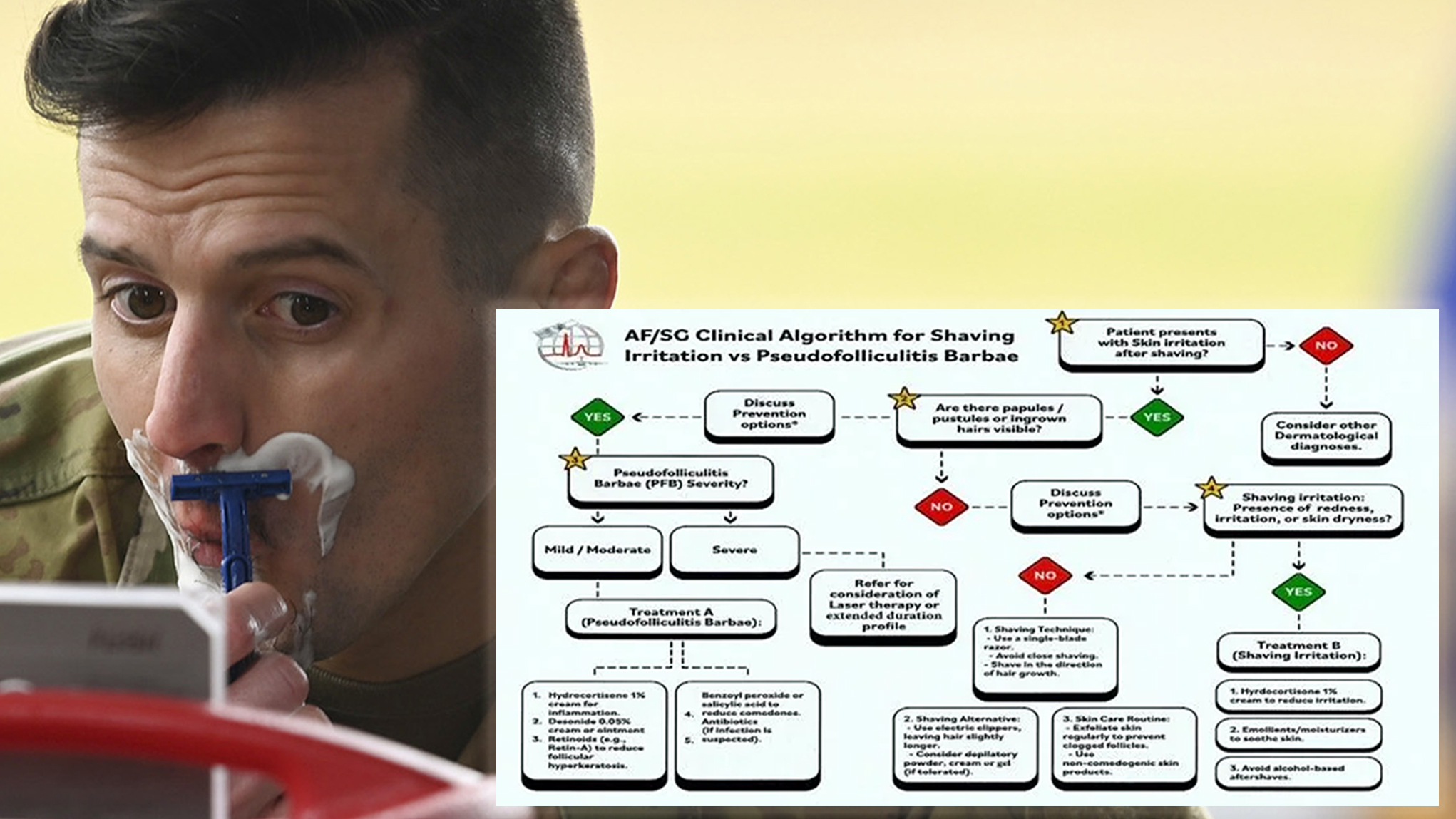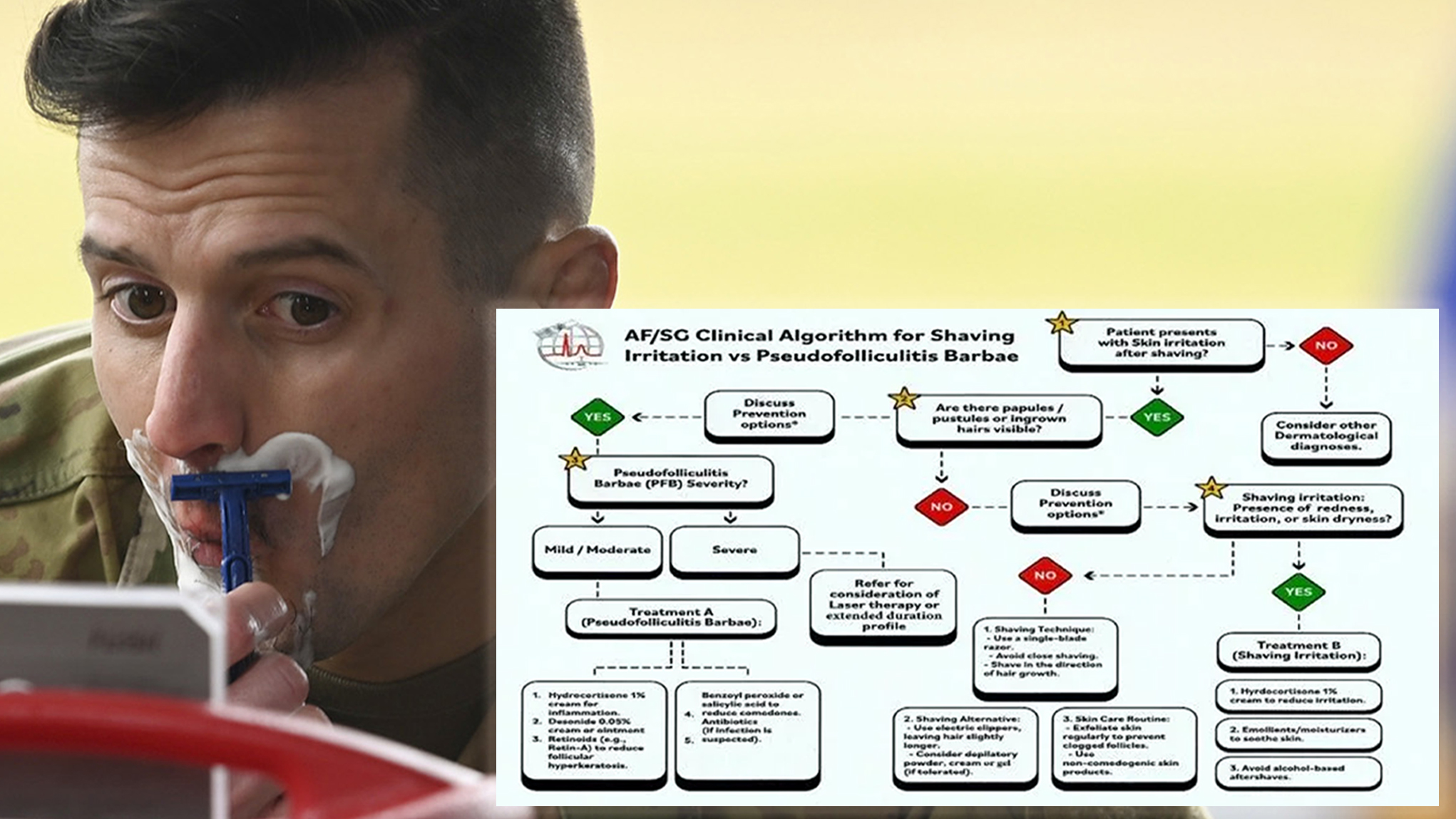

The Department of the Air Force’s process for determining if airmen and Space Force guardians should receive medical waivers for shaving is about as indecipherable as the infamous flow chart about counterinsurgency operations in Afghanistan from years ago.
A document from a Louisiana Air National Guard unit that was posted on Reddit includes the Air Force’s “algorithm” — a 20-step flowchart — for determining if airmen should get shaving waivers for Pseudofolliculitis Barbae, or PFB, a painful skin condition made worse by shaving.
The flowchart provides a breakdown of which symptoms are common for PFB and which might indicate another shaving issue. It also includes several possible courses of action, including prescribing hydrocortisone to treat inflammation, allowing airmen and guardians to use electric clippers instead of razors to keep their facial hair slightly longer, and, in some cases, laser therapy.
But it can be difficult for the layman to trace a path on the chart from diagnosis to treatment, and it is not clear what the requirements are for issuing a shaving waiver.
An Air Force official confirmed to Task & Purpose on Wednesday that the flow chart is authentic, but it was meant for medical providers, not airmen.
The flowchart is intended to help medical providers determine if airmen and guardians have PFB or another type of skin irritation that could be caused by local factors, such as a high mineral content in the water or the dryness of the air, the official said. Once the medical providers have diagnosed the issue, they can decide whether to issue a waiver or pursue an alternative medical treatment.
Common in up to 60% of Black men, PFB is a condition in which facial hair grows back into the skin, causing inflammation, according to the American Osteopathic College of Dermatology. Shaving “sharpens the ends of the hairs like a spear,” exacerbating the condition, the college’s website says.
“A 100% effective treatment is to let the beard grow. Once the hairs get to be a certain length they will not grow back into the skin,” the website says.
But U.S. military leaders have long maintained that service members need to be clean-shaven to wear oxygen and gas masks, even though Great Britain and other countries permit their troops to have beards.
Last year, Congress required the Air Force secretary to brief lawmakers about a potential pilot program that would allow airmen and guardians to grow beards.
Then, in January, the Air Force announced that all airmen and guardians with medical profiles for shaving would need to be evaluated by a healthcare professional within 90 days of their next annual Periodic Health Assessment to receive another shaving waiver.
The change, which does not apply to religious accommodation shaving waivers, reversed a 2020 policy that allowed airmen and guardians diagnosed with PFB to be issued waivers for five years without annual renewals.
Shortly before the policy update was announced, Air Force Chief of Staff David Allvin announced the service would conduct more formations and uniform inspections and review policies and standards that look at ”waivers and the exceptions.”
Defense Secretary Pete Hegseth also announced a review in March that will look at how all the military services’ physical fitness, body composition, and grooming standards have changed over the past decade. That review “includes but is not limited to beards,” he wrote.
“High standards are what made the United States military the greatest fighting force on the planet,” Hegseth wrote in the March 12 memo. “The strength of our military is our unity and our shared purpose. We are made stronger and more disciplined with high, uncompromising, and clear standards.”
